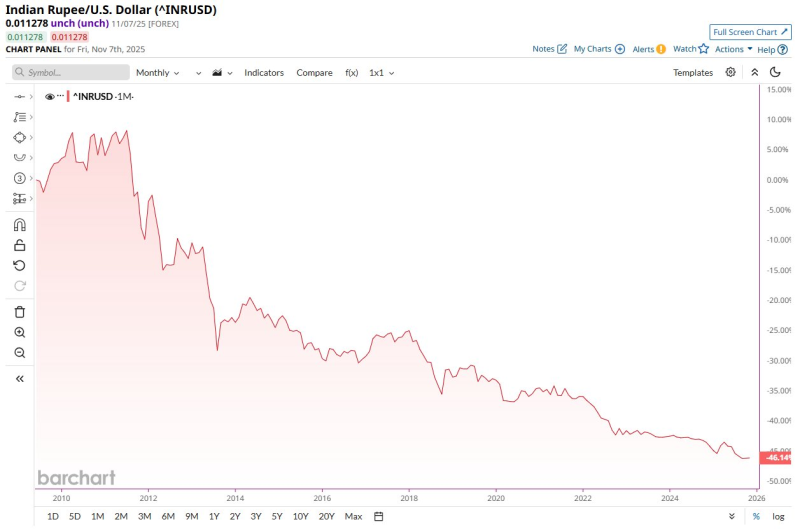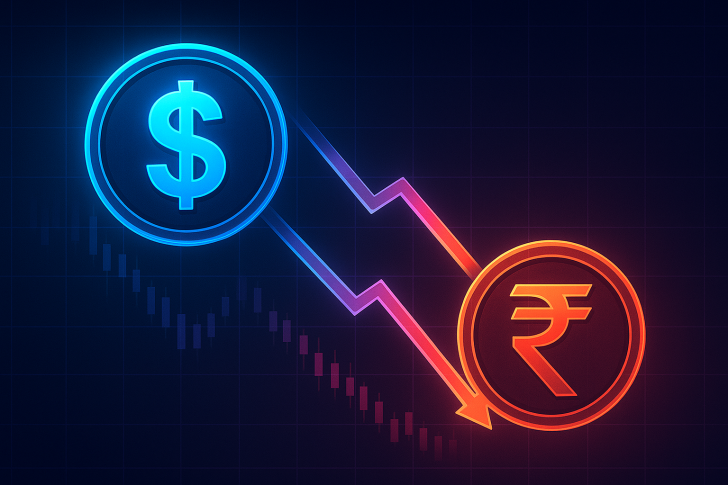The Indian Rupee's long-term decline has entered a worrying new phase as it continues losing ground against the U.S. Dollar. Since 2009, the currency has shed nearly half its value—a staggering 46% drop with virtually no meaningful recovery. What makes this particularly striking is how rare such consistency is. Very few global currencies have shown this kind of steady, uninterrupted depreciation over a 16-year period.
Rupee's Persistent Downtrend Confirmed by Long-Term Chart
A recent chart shared by Barchart trader visualizes the INR/USD pair on a monthly timeframe, and the long-term damage is impossible to ignore. The decline kicks off in late 2009, picks up serious momentum between 2011 and 2013, then continues its downward march through 2018, 2020, and into late 2025.

The pattern shows consistent lower highs and lower lows stretching across 16 years, with no major reversals—just short, weak relief rallies that quickly fizzle out. The steeper drops line up with periods of macroeconomic stress like the 2013 taper tantrum, the 2018 tightening cycle, and the 2020 pandemic shock. Currently, the pair sits around the –46% mark from its 2009 level. This isn't a sudden crash—it's a long, structural slide showing no signs of stopping.
What's Driving the Rupee's Long-Term Weakness?
Understanding what keeps pushing the Rupee down matters just as much as the trend itself. India has dealt with persistent current account deficits for years, keeping dollar demand structurally high. The country's heavy reliance on imported oil makes the currency vulnerable whenever energy prices spike. When the U.S. Dollar strengthens—especially during Fed tightening cycles—the Rupee gets squeezed harder. India's inflation has consistently run higher than in the U.S., eroding purchasing power, while capital outflows during global risk-off events add more downward pressure. Combined, these factors make sustained appreciation nearly impossible.
Historical Context: How This Fits Into Global Currency Trends
The Rupee's decline isn't happening in isolation. Other emerging-market currencies like the Turkish Lira, Argentine Peso, and South African Rand have weakened as the U.S. Dollar strengthened globally. But India's situation stands out because despite being one of the fastest-growing major economies, its currency keeps weakening. That contrast highlights deep structural vulnerabilities in trade balances and inflation management that strong GDP growth alone can't fix.
What Comes Next for the Indian Rupee?
Looking forward, real stabilization will require several things to align. The U.S. Dollar would need to soften, India's export competitiveness would have to improve, foreign investment inflows would need to strengthen, and the trade imbalance would have to narrow. Without these shifts happening together, the long-term downtrend could easily extend into 2026 and beyond.
 Peter Smith
Peter Smith

 Peter Smith
Peter Smith


